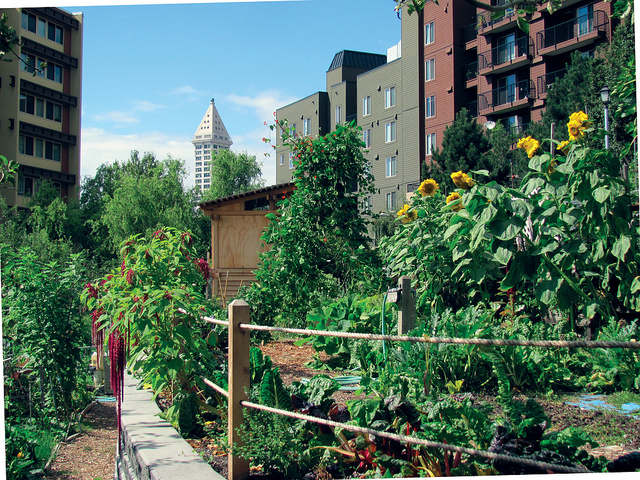Some Of City Blooming
Some Of City Blooming
Blog Article
The smart Trick of City Blooming That Nobody is Discussing
Table of ContentsCity Blooming for BeginnersThe Main Principles Of City Blooming The Main Principles Of City Blooming What Does City Blooming Mean?The Best Strategy To Use For City Blooming
Intrigued in expanding food for sale in the City of Chicago? Below is a checklist of frequently asked questions pertaining to the regulations and regulations that growers must consider when intending a city farming task.
The zoning change does not change any various other codes managing composting, structure permits, acquiring or renting City owned residential property, organization licenses or ecological contamination. There are existing codes that control these issues and they continue to be in complete result and might be applicable to your job. Community gardens are normally owned or handled by public entities, public companies or community-based organizations and preserved by volunteers.
Urban farms grow food that is planned to be offered, either on a nonprofit or for-profit basis. Due to their commercial objective, metropolitan farms call for an organization license.
Not known Facts About City Blooming
The amount of compost material can not surpass 25 cubic yards at any kind of offered time according to the criteria in 7-28-715 of the City's Municipal Code. Since the soil at a lot of brand-new yard websites needs modifying, compost, dirt, timber chips, or other products can be obtained to create or improve the expanding space.

If a structure permit is required after that the hoophouse will be considered an accessory structure. You can learn even more about the structure license demands by speaking to the Division of Buildings. The 25,000-square-foot dimension restriction is meant to stop a solitary community garden from dominating a provided block or interfering with the block's existing domestic or industrial character.
The restriction does not put on yards found in Public Open Space (POS) areas. Can there be more than one area yard that is 25,000 square feet on a single block? Yes. The dimension restriction puts on specific yards, not to private blocks. No. Secure fencing is not needed, however, gardens that have large car park locations might be needed to set up fence or various other landscape design features.
City Blooming Things To Know Before You Buy
B1 & B2 areas require that all industrial use activities be performed indoors. R districts limit commercial activity. The regulations show the function and intent of the Zoning Code. Is fencing required for metropolitan farms? Yes. Fences might be called for, along with landscape design and screening, for sure parking lot and outdoor work or storage areas relying on place and the details task taking area.
Yes. Urban farms need building permits and zoning approvals prior to building and construction. Various other forms of city evaluation may be required depending upon details frameworks, activities, dimension, landscaping, licensing, public heath and stormwater management problems. A lot of these needs are identified in the job layout or allowing process, however, the applicant may be accountable to individually identify specific licenses or permits that may be required.
Yes. The kind of certificate is figured out by what is occurring at the site. The Division of Business Affairs and Customer Defense can assist identify the certain kind of company license that's needed. Yes. Off street car park is needed for many industrial projects in Chicago. The needed number of vehicle parking areas is based on the variety of employees working with site and not the square footage of the expanding area.
City Blooming - The Facts

Yes. A city farm can offer compost product produced on website, nevertheless, the procedure needs to follow the regulations in 7-28-715 of important site the Chicago Municipal Code. Yes. Aquaponic systems are allowed inside your home on urban farms in several zoning districts. Nonetheless, a zoning review and structure authorization is needed in order to mount structures or systems and a service permit is needed as explained over.
Approximately five hives or colonies of honey bees may be maintained as an accessory usage. Beekeepers should register with the Illinois Division of Agriculture. For additional information concerning the recommended zoning modification you may speak to the Division of Housing and Economic Growth, Bureau of Planning and Zoning at 312.744.8563.
Farming in cities and metropolitan areas A city farm in Chicago. Urban agriculture describes various methods of cultivating. https://dzone.com/users/5164299/cityblooming.html, handling, and distributing food in city locations. The term likewise puts on the location tasks of pet husbandry, aquaculture, beekeeping, and cultivation in a metropolitan context. Urban farming is distinguished from peri-urban farming, which occurs in country locations beside suburbs.
Some Known Factual Statements About City Blooming
, that look for to develop social networks founded on a shared principles of nature and neighborhood holism. These networks can develop by means of formal institutional assistance, ending up being integrated right into local town preparation as a "shift community" activity for sustainable metropolitan advancement.
The much more straight accessibility to fresh vegetable, fruit, and meat products that may be understood with urban agriculture can enhance food security and food security while lowering food miles, resulting in reduced greenhouse gas exhausts, consequently adding to environment adjustment mitigation. Several of the first evidence of metropolitan farming originates from Mesopotamia.
Report this page